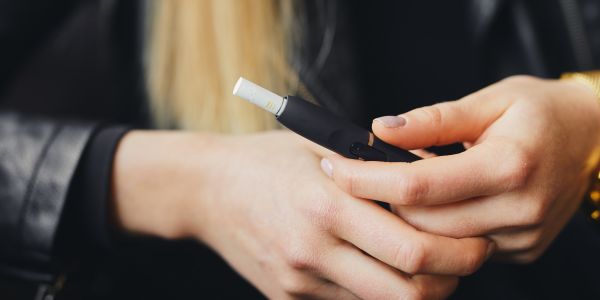The Surgeon General has declared e-cigarette use among youth “an epidemic” after recent studies showed a drastic surge in use.
Between 2017 and 2018, e-cigarette use increased 78% among high school students, from 11.7% in 2017 to 20.8% in 2018. In 2018, more than 3.6 million U.S. youth – including 1 in 5 high school students and 1 in 20 middle school students – admitted to using e-cigarettes.
Although the FDA regulates all tobacco products, including e-cigarettes, cigars, hookah and pipe tobacco, restricting access to those younger than 18, e-cigarettes continue to get in the hands of U.S. youth. The agency recently rolled out a new policy making it harder for kids to buy vaping products. Since the age restriction alone doesn’t seem to be doing the job, this new policy is designed to restrict how and where e-cigarettes are sold. The policy would specifically limit sales of fruity and flavored vaping products.
Why is the FDA targeting flavored products? Many young e-cigarette users have admitted to vaping because the devices come in flavors they like. One study even found that 96.1% of 12- to 17-year-olds who had started vaping began with a flavored product. Researchers have identified over 15,500 unique e-cigarette flavors, many of which are fruit-, candy-, or dessert-flavored. E-cigarettes aren’t the first to market to young adults with tempting flavors, though – in 2009, the Family Smoking Prevention and Tobacco Control Act banned cigarettes with specific characterizing flavors, except menthol and tobacco. The act, however, did not apply to other tobacco products.
Aren’t e-cigarettes better than regular cigarettes? E-cigarettes were originally created as a safer alternative to regular cigarettes. Some smokers have turned to vaping in hopes of quitting smoking, but there is little research to show that e-cigarettes are an effective way to quit smoking. And while they may be less harmful than regular cigarettes, that doesn’t mean they’re harmless – especially when it comes to adolescents.
Why is vaping bad for health? Most e-cigarettes contain nicotine, which can harm a still-developing brain. In fact, even though the age restriction for tobacco products stops at 18, the brain keeps developing until about age 25. Using nicotine in adolescence can harm parts of the brain that control attention, learning, mood and impulse control. It may also increase risk for future addiction to nicotine and other drugs. Some studies have even shown that youth who use e-cigarettes are more likely to begin smoking regular cigarettes.
These devices use liquid that is converted into aerosol by heat from a battery-powered coil when the user inhales. The aerosol that is inhaled and exhaled could be harmful to the user’s lungs. In addition to nicotine, certain e-cigarette aerosols have been found to contain dangerous substances, such as cancer-causing chemicals, heavy metals, such as nickel, tin and lead, and diacetyl, a flavoring chemical linked to lung disease.
As if that’s not scary enough, there have also been a number of reports of e-cigarette fires and explosions. These have generally been due to defective batteries or error while using, charging or storing the devices.
How can I talk to my kids about the dangers of using e-cigarettes? Encourage an open dialogue with your kids and be careful not to be judgmental or critical. Depending on their age, your kids may already have some knowledge of vaping. They may have even been tempted or presented with the opportunity to experiment with e-cigarettes or other tobacco products already. Be patient, ready to listen, and prepared to share credible information with them about the dangers of vaping.
If you’re not sure how to begin, there are plenty of resources available to help you. E-cigarettes.SurgeonGeneral.gov has some great information to get you started. You can also talk with relatives, teachers, coaches, or your health care provider for support in steering your kids away from tobacco products.
Lastly, lead by example. Kids are like sponges, constantly absorbing behaviors and learning lessons by watching what their parents do. If you use tobacco, it’s never too late to quit. You can get free help by visiting smokefree.gov or by calling 1-800-QUIT-NOW.
You might be eligible for help through your health insurance provider. The Tobacco Cessation Coaching program is available to all Blue Care Network members. Blue Cross PPO members insured through an employer should call their company’s benefit administrator to see if the program is part of their benefit package.
If you found this helpful, you might want to read these posts:
- How Family Dinners Help Kids Avoid Drugs and Alcohol
- Talking to Your Kids About Smoking
- The Great Debate Over Tobacco Alternatives








